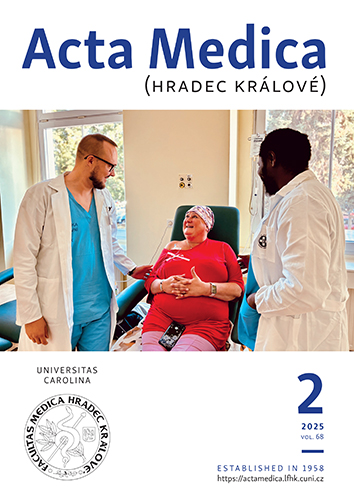ACTA MEDICA, Vol 56 No 3 (2013), 97–103
Sealing Ability of Mineral Trioxide Aggregate, Calcium Phosphate Cement, and Glass Ionomer Cement in the Repair of Furcation Perforations
Prabath Singh, Joseph Paul, Abdul Aziz Al-Khuraif, Sajith Vellappally, Hassan Suliman Halawany, Mohamed Hashim, Nimmi Biju Abraham, Vimal Jacob, Rooban Thavarajah
DOI: https://doi.org/10.14712/18059694.2014.16
published online: 23. 07. 2015
abstract
Objectives: The purpose of this study was to evaluate the in vitro sealing ability of three repair materials. Mineral trioxide aggregate (MTA; Group A), calcium phosphate cement (CPC; Group B), and light cured glass ionomer cement (GIC; Group C) when used to repair the perforation created in the pulpal floor of fifty extracted human permanent molars. Materials and methods: Preparation of access openings and furcation perforations were done, and the teeth divided into five experimental groups (A, B, C) including two controls (D, E) with ten samples in each group randomly. Following the repair procedure, the pulp chambers and access openings were filled with composite resin and immersed in 2% methylene blue solution for 48 hours. The teeth were sectioned longitudinally and the linear dye penetration measured under a stereomicroscope. Results: The comparison of the linear length of micro-leakage (mm) among the experimental groups revealed no significant difference (p = 0.332). On calculating the percentage of depth of leakage to the total length of the perforation, it was observed that the mean leakage was 35.5% in Group A, 53.6% in Group B and the highest, 87.5% in Group C. The mean of leakage percentage was statistically significant by Kruskal-Wallis test (p = 0.003). The results indicated that the dye penetration used as furcation perforation repair material was least with mineral trioxide aggregate. Comparing the depth of penetration of dye, 50% of the Group A samples showed less than 25% of depth penetration. While 40% of Group B cases had more than 50% dye penetration. In our study, all Group C teeth had ≥ 50% dye penetration. Conclusions: The present study indicated that GIC had the greatest dye penetration followed by CPC and MTA. Mineral trioxide aggregate and calcium phosphate cement had comparatively better sealing ability than glass ionomer cement.
keywords: Furcation defects; Mineral trioxide aggregate; Calcium phosphate cement; Glass ionomer cement; In vitro; Iatrogenic

Sealing Ability of Mineral Trioxide Aggregate, Calcium Phosphate Cement, and Glass Ionomer Cement in the Repair of Furcation Perforations is licensed under a Creative Commons Attribution 4.0 International License.
210 x 297 mm
periodicity: 4 x per year
print price: 150 czk
ISSN: 1211-4286
E-ISSN: 1805-9694
